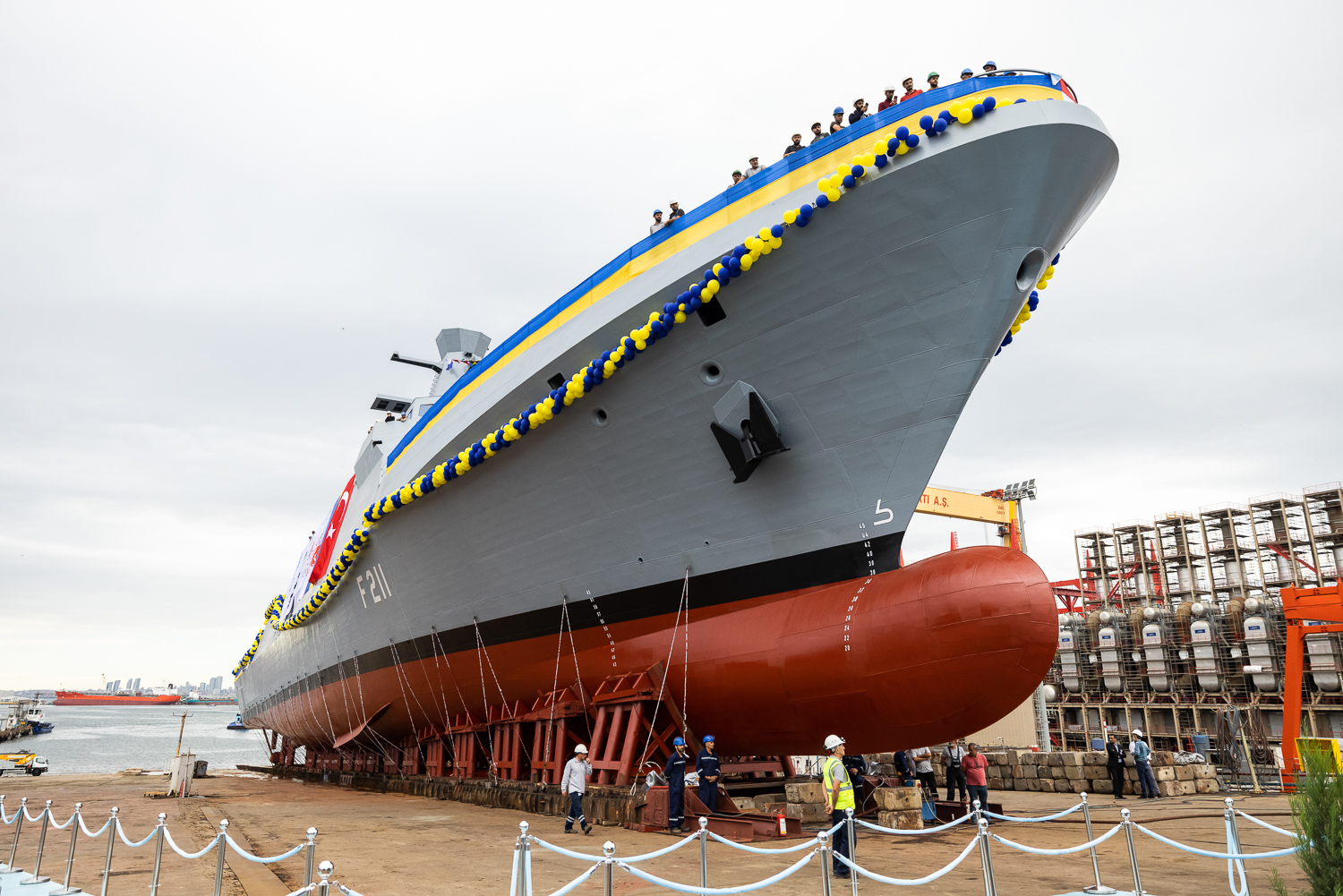
Eastern European countries continue to bolster their naval forces prompted by Russia’s invasion into Ukraine.
Even with small coastlines and limited operations in the confined waters of the Baltic and Black Seas, the maritime domain is a major factor for national security, experts say.
Most Eastern European states have naval forces “that tended to reflect more direct defense rather than power projection, and also the fact that their access to the maritime domain is through the largely enclosed waterways of the Baltic and Black Seas (and in Ukraine’s case the Sea of Azov),” Nick Childs, senior fellow for Naval Forces and Maritime Security at the International Institute for Strategic Studies (IISS), told USNI News in an interview.
Force structures have historically centered on coastal defense and patrol capabilities, Childs said. The Russo-Ukraine War sparked increased defense spending across Europe. While much of this additional funding has focused on air and land systems procurement, concerns about the Russian threat have seen increases in naval capability ambitions too, Childs said.
“This has included moves by the likes of Bulgaria, Estonia, Latvia and Romania to bolster their coastal anti-ship missile capabilities,” he said. “Among the larger of the Eastern European navies, there are also plans for further capability enhancement, including Bulgaria’s plans for corvette-sized missile-armed combatants, Poland’s program to procure large modern frigates, and speculation about Romania seeking a new submarine capability.”
Despite the focus on land operations in Ukraine, both sides have launched high-profile naval attacks, including the 2022 sinking of Russian flagship RTS Moskva.
“Ukraine has shown its ability to put Russian naval capabilities at risk with an innovative combination of coastal anti-ship missiles and uncrewed systems,” Childs said.
“The priority is likely to be on boosting these further, but ultimately also to resume the program of capability improvements originally planned.”
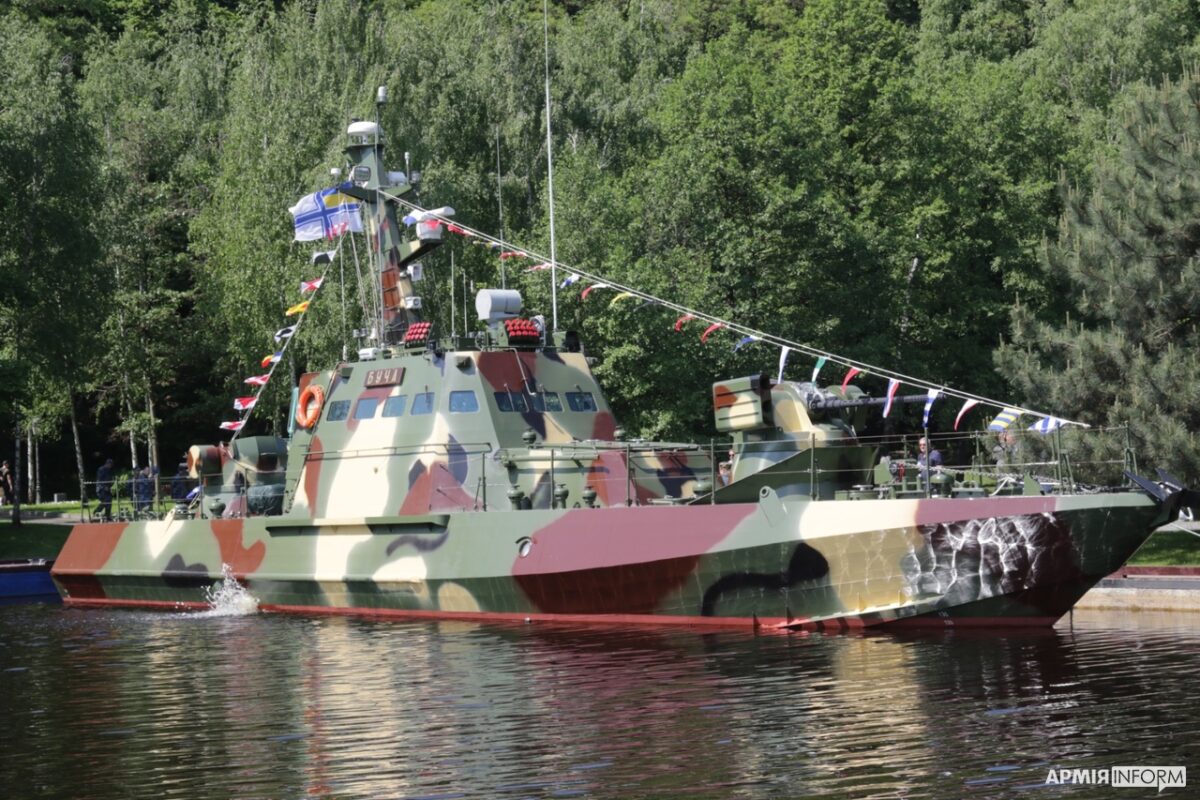
The commissioning of the Gurza-M class river patrol boat, Bucha (P 181) into the Ukrainian Navy in May 2023. Fitted with a 30 mm ZTM-1 automatic gun, 30 mm KBA-117 grenade launcher, 7.62mm machine gun, and missiles the vessels are well armed. 20 are planned. Ukraine MoD Photo
On May 26, Ukraine commissioned an eighth Gurza-M (Viper-M) riverine patrol boat armed with missiles. Bucha (P 181) was built by Kuznia na Rybalskomu shipyard in Kyiv, weighs 54 tons and is 75 feet long. The boat joined the Ukrainian Navy flotilla on the Dnipro River, which has become a dividing line between Ukrainian and Russian forces. Of the seven Gurza-M-class patrol boats, four were captured or destroyed in the initial invasion.
On Oct 2, Turkish shipbuilder RMK Marine launched Hetman Ivan Mazepa (F 211), the first of two 325-foot-long Ada-class corvettes for Ukraine. Delivery is expected at the end of 2023. The company also cut steel for the second ship.
Fitted with the Harpoon anti-ship missile, Mica anti-air missile, a 35mm Millennium gun and the MU90 torpedo, as well as flight deck for a maritime helicopter, the Ada-class corvette represents a significant increase in sea-going capability for the Ukrainian Navy. It also helps replace hulls lost in the Russo-Ukraine War. This includes frigate Hetman Sagaidachny, a Project 1135.1 Krivak III-class vessel, which was scuttled by the Ukrainian navy in February to prevent its capture.
More vessels are en route, including:
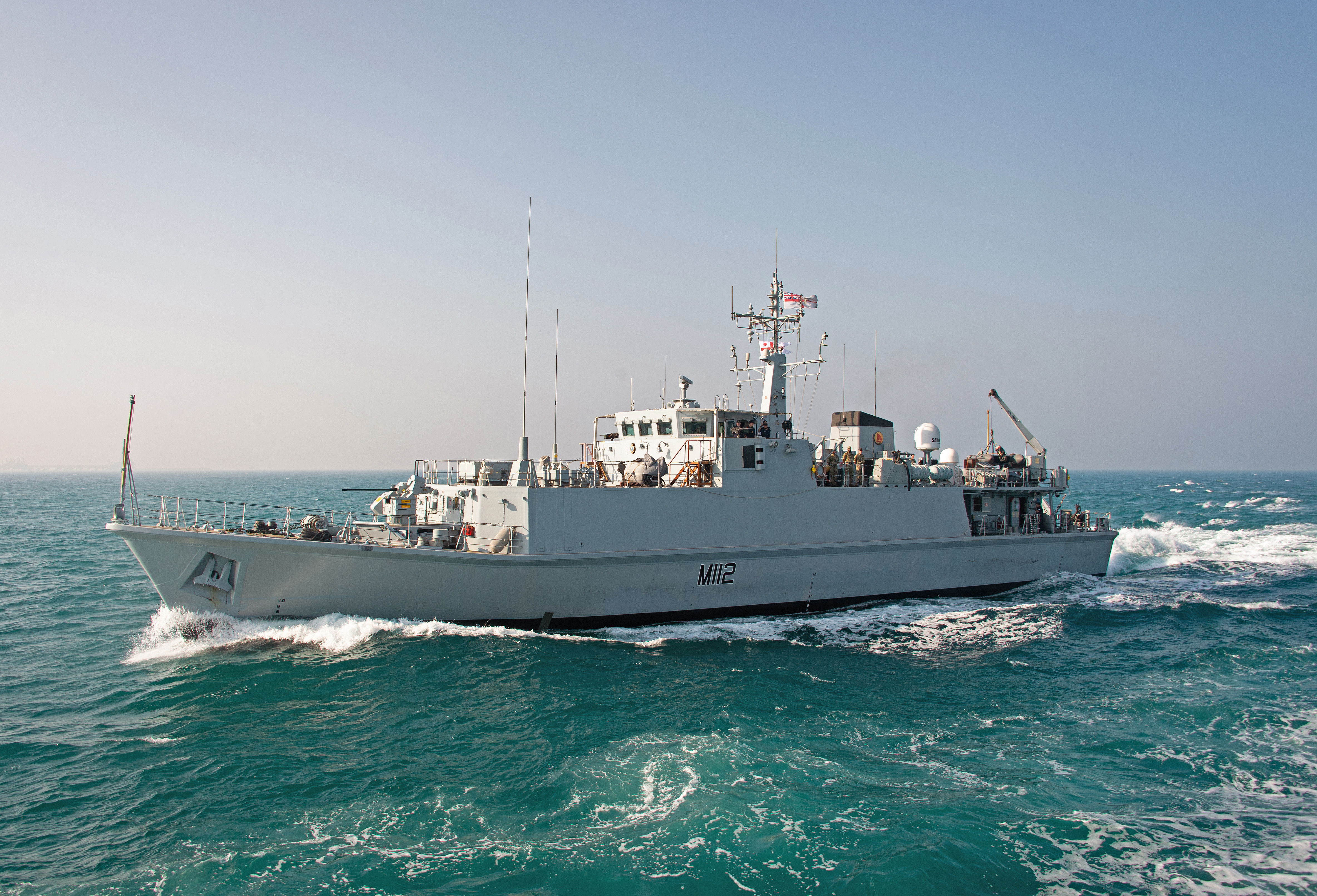
- Two ex-U.K. Royal Navy Sandown-class minehunters refurbished by British shipbuilder Babcock under a Ukrainian Naval Capabilities Enhancement Project (UNCEP) deal signed in November 2021, although the February 2022 Russian invasion delayed the original 2022 delivery date.
- Eight P-50U missile craft, also from Babcock
- U.S. shipyard SAFE Boats International to be delivered in March 2025 under a contract signed in September 2021.
- 20 FPB 98 MKI patrol boats for the Ukrainian State Border Guard Service from French company OCEA. The first vessels, BG 201 and BG 202, were launched in December 2021 and February 2022 respectively, and shipped to Ukraine in late May 2023. A third boat has been launched with all deliveries slated for completion by 2024. Five FPB boats were due to be built in Ukraine at Nibulon Shipbuilding in Mykolaiv, but the state of the shipyard is unclear. It was occupied by Russian forces in March 2022, but and retaken by Ukraine in November.
“The Ukraine Navy lost a significant part of its capability following Russia’s annexation of Crimea,” Childs said. “Plans were in place to rebuild this with support from among others Turkey, the UK and the US in an incremental way with the creation initially of a modern ‘mosquito’ fleet of patrol craft, mine warfare vessels and ultimately corvette-sized vessels. Delivery of much of this has had to be put on hold because of the war.”
Just prior to the Russian invasion in February 2022, the Ukrainian Navy commissioned two ex-U.S. Coast Guard Island-class patrol boats supplied under the U.S. Excess Defense Articles (EDA) program. The crews had completed training but the craft were not yet fitted with weapons due to operations in the Black Sea and Sea of Azov. Up to seven patrol boats are reportedly planned.
The continued production of these vessels highlights the importance of the maritime domain in the ongoing war. They also signal Kyiv’s intent to build up its naval capability in the long term, not just for defense, but also for offensive operations. That could include plans to retake territory on the Black Sea, or even the Crimea.
Other naval assets provided to Ukraine include:
- Three Sea King helicopters from the U.K. – via company HeliOps – began operations in January 2023 with Ukrainian crew and can support airborne troop transport and supply.
- Six Autonomous Uncrewed Vehicles, also from the U.K., with training to assist with Ukraine’s mine clearance operations in its waterways. The MoD announced in September 2022 that all six will be the same type, with three from its own stocks and three supplied by industry. These are likely to be the REMUS 100 AUV, USNI News understands.
The Ukrainian Navy’s lost its Project 1258 Yevgenya-class minehunter, Project 1265 Sonya-class minehunter and two Project 266M Natya I-class minesweepers during the Crimean annexation in 2014. Ukraine urgently needs mine countermeasures. to make its Black Sea commercial shipping channels safe for millions of tons of grain exports. An AUV with mine countermeasures could be deployed from the Ukrainian Navy’s other ships.
Drifting mines have washed up on the coasts of Ukraine’s Black Sea neighbors – Romania, Bulgaria and Turkey (all three NATO members) – causing concern for their commercial shipping routes. The Romanian Naval Forces minesweeper Lieutenant Dimitrie Nicolescu (F-29) was damaged by a rogue mine in September 2022. Romania and Bulgaria have MCM ships that can assist with detection and clearance/ Both countries are also modernizing their naval capabilities to stop Russia from establishing an anti-access/area denial bubble in the Black Sea. Russia has added new surface ships, submarines and modern weapons to its Black Sea Fleet in recent years.
Romania’s defense budget has increased dramatically since 2014, going from about $3 billion to over $6 billion estimated for 2023, with most of the extra funding going to procurement. Under Romania’s 2020 defense white paper, this level of funding is to continue to rise, albeit more gradually, through 2032.
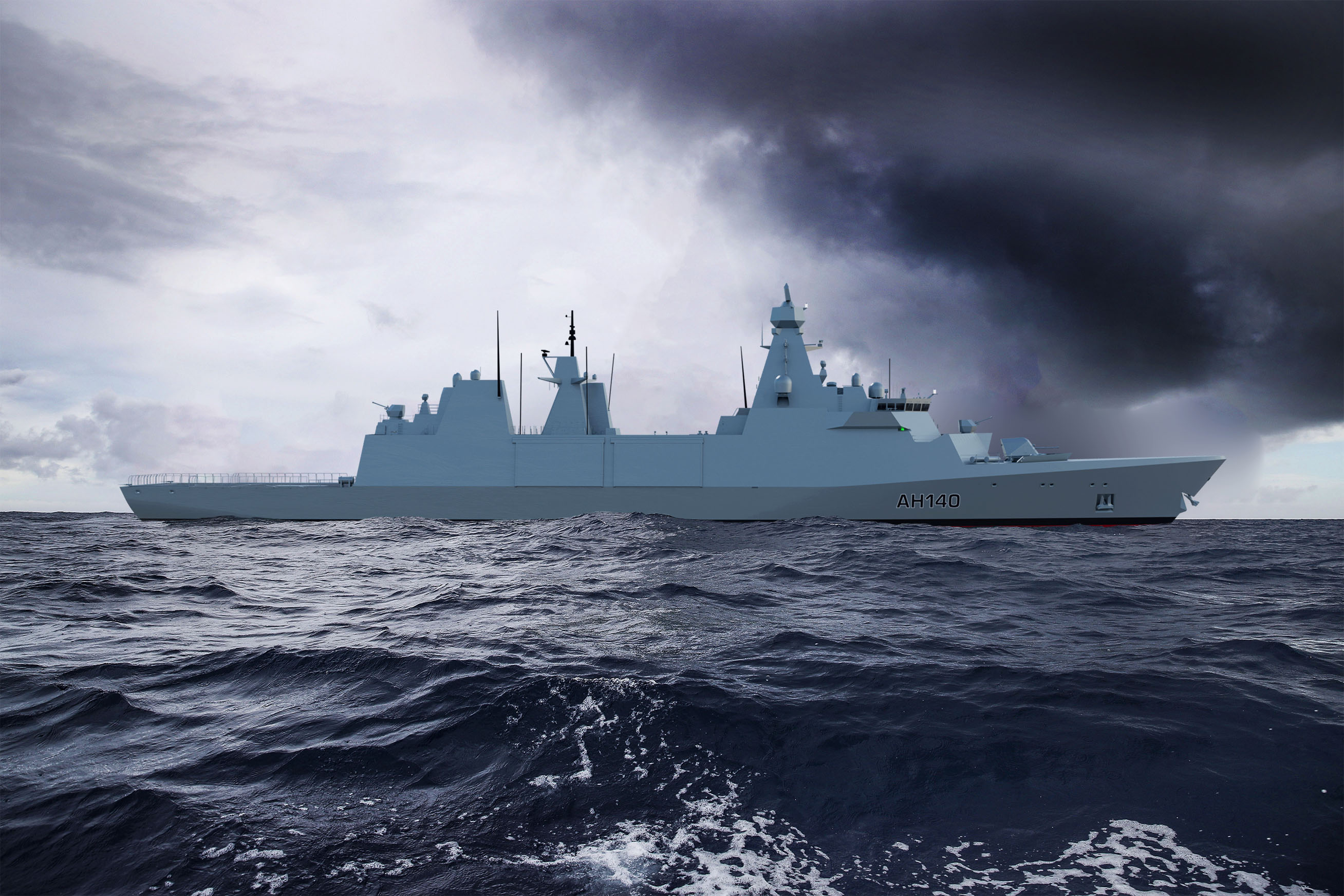
While most of this funding will go to the air force, a multi-mission corvette program will provide the Romanian Naval Forces with four new 2,500-ton surface combatants. Naval Group was selected in July 2019 to provide its Gowind 2500 design for $1.36 billion to be built at the Romanian shipyard Santierul Naval Constanta (SNC). The company will also upgrade the Romanian Naval Force’s two ex-U.K. Royal Navy Type 22 frigates Regele Ferdinand (F-221) and Regina Maria (F-222) were acquired in 2004-05. The new corvettes will replace the existing pair of Tetal-class corvettes and a pair of Improved Tetal-class corvettes within the next few years. But a legal challenge by ship manufacturing competitor Damen Schelde has delayed production, and it is not clear if the corvettes will be delivered in seven years as planned. Damen’s SIGMA 10514 design was initially selected for the project in 2016 for 1.6 billion euros, but this decision was not ratified by Parliament.
The Romanian Naval Forces fleet is aging, and after the corvette project, Bucharest plans to replace or upgrade the majority of its ships, moving away from Soviet-era equipment. Its more venerable vessels include the frigate Maresti (F 111), its minelayer and four mine sweeper vessels, three 1980s vintage Project 1241RE Zborul-class (Tarantul I) missile craft, three torpedo boats, river patrol boats and coastal missile defense system.
Modernization plans have been in the works for the best part of a decade, but have failed to materialize. However, local media reported in May 2023 that approval has been granted for the procurement of two new submarines worth 2 billion euros. Naval Group’s Scorpene-class submarine design has been selected with delivery expected within about eight years. Plans for local manufacturing appear to have been abandoned. Romania’s submarine Delfinul has been tied up dockside since 1996 and used for training.
It is also reported that Romania plans to buy two ex-R.N. Sandown-class minehunters from the U.K. that are set to enter service within the next five years. They will be fitted with uncrewed systems. Bucharest will likely modernize the Zborul-class craft will likely be modernized, likely to fill the capability gap left by the corvette program delay; and has signed a contract to procure a vehicle-launched Naval Strike Missile (NSM) for its coastal forces, replacing the existing Rubezh 4K51 systems. American company Raytheon awarded Kongsberg a $136.2 million contract in December 2022 to deliver the NSM to Romania by 2024 via U.S. Foreign Military Sales.
Bulgaria is following a similar route to Romania. The Bulgarian Navy is expected to take delivery of two new corvettes under the Multipurpose Modular Patrol Vessel (MMPV) program. Construction is underway at Bulgarian shipbuilder MTG Delfin in Varna, which is building the ships to the OPV-90 design from German shipbuilder NVL Group (formerly Lurssen Werft). NVL was selected as the prime contractor for the MMPV project in November 2020 with a budget of BGN820 million to deliver the pair of vessels in 2025-26.

The keel was laid for the first ship, Hrabri (12), in June 2022, with the keel laid for the second ship, Smeli (11) completed in June 2023. At 90 meters long and displacing about 2,300 tons, the MMPVs main armament will be the Saab RBS15 Mk 3 anti-ship missile, a 76-mm gun, lightweight torpedoes and a 35-mm remote weapon station. There is space on the flight deck to operate the navy’s AS565MB Panther helicopter.
It is not clear if the new corvettes will replace the Bulgarian Navy’s pair of ex-Soviet Navy Project 12412 Reshitelni-class (Pauk I) patrol corvettes, or its Project 1159 Koni-class frigate, Smeli. But this is an important step for Bulgaria, which has struggled to modernize its armed forces, and the Bulgarian Navy has seen successive programs delayed or canceled. The first attempt to initiate the MMPV project in 2017 collapsed due to tax issues.
However, plans for a much-needed modernization of the Bulgarian Navy’s three ex-Belgian Navy Wielingen-class frigates have yet to materialize. Furthermore, the futures of the two Reshitelni-class corvettes and the navy’s Tarantul-class missile corvette are unclear. The operational status of the Bulgarian Navy’s 12 mine countermeasures ships is also unknown. However, the navy commissioned a new 3,076-ton research vessel, Sv Sv Kiril I Metodi (421), in July 2021 from Subsea Technology that will be used for Antarctic operations and for naval training.
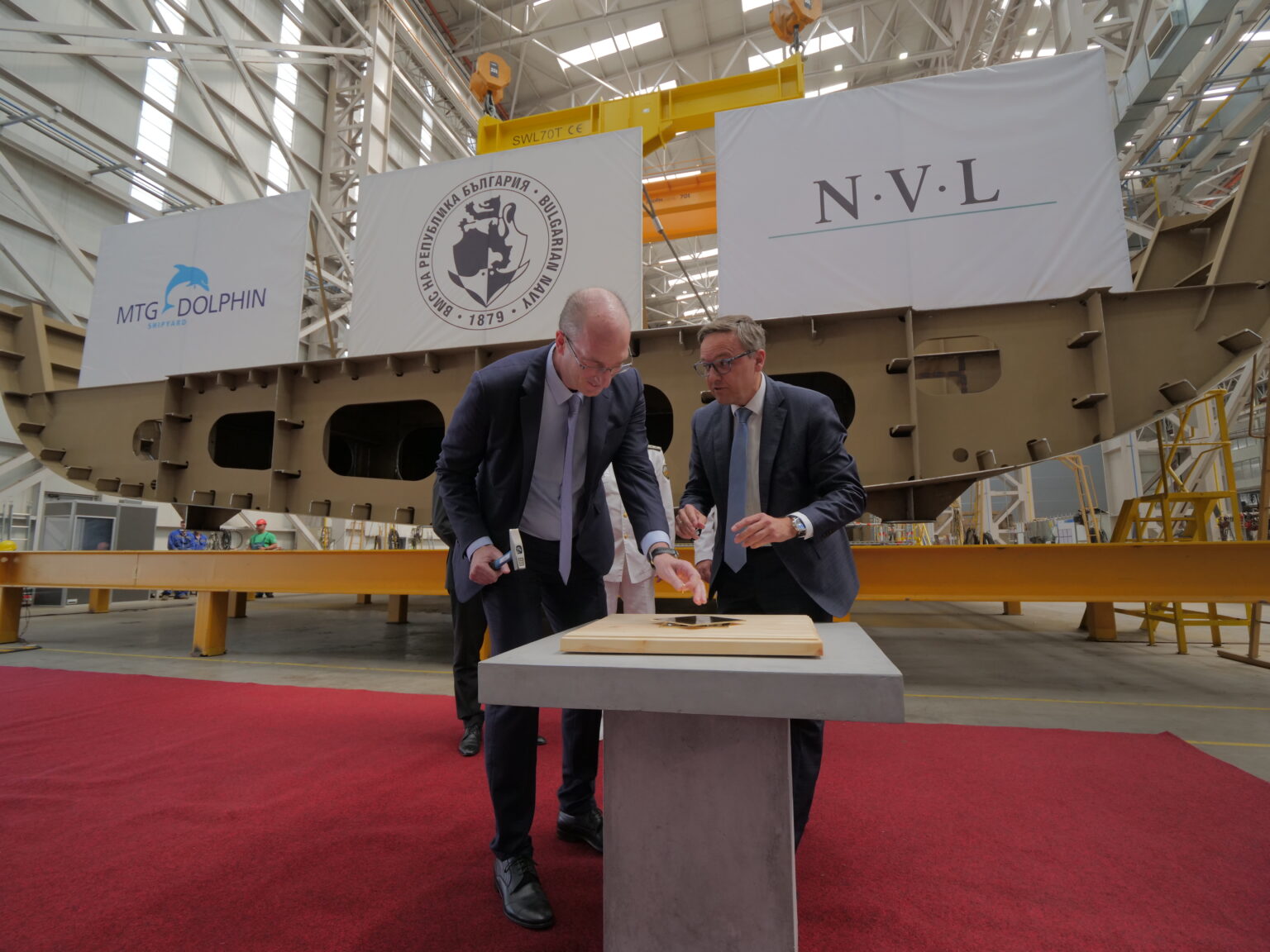
Meanwhile, the Baltic countries of Latvia, Estonia and Lithuania are focusing on modernizing naval MCM, communications and surveillance capabilities for both surface and sub-surface domains. Childs said the Baltic will require increased maritime domain awareness capability since the attack on the Nord Stream pipeline.
The Lithuanian Navy is fitting its four ex-Royal Danish Navy Flyvekfisken-class OPVs with the new GEM Electtronica Colombus Mk2 3D navigation radar from Leonardo. They will be operational by the end of 2023, detecting and tracking surface and aerial targets at a range of 100 km, enabling Lithuania to monitor the neighboring Russian enclave of Kaliningrad.
The Latvian Navy is modernizing its five ex-Dutch Navy Alkmaar-class (Tripartite) minehunters under a contract with French company ECA Group that was announced in September 2020. Three of the ships will be fitted with the UMIS uncrewed MCM suite that includes the A18-M AUVs for mine detection and the Seascan Mk2 and K-ster C ROVs for identification and disposal. The ships are due for completion by 2024 and will allow for more stand-off MCM operations. In the event of a conflict, Baltic countries will need to keep their sea lanes and access to their ports open to allow for re-supply and reinforcements.
Estonia has set requirements for new high-frequency communications systems that meet NATO Broadcast Ship-to-Shore requirements, including shore monitoring and control stations and multimode networks for high-speed data transmissions, secure voice and messaging to ships and offer better beyond line-of-sight capabilities. HF communications capabilities could keep naval C2 functional if an adversary tried to block Estonia’s use of the electromagnetic spectrum.





